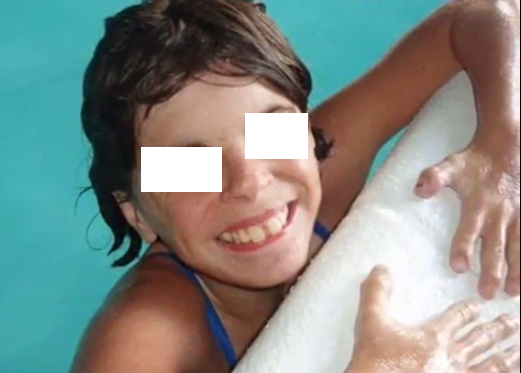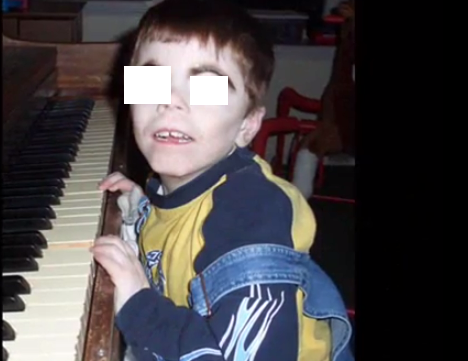Cornelia de Lange syndrome is a genetic condition that can result in extreme developmental abnormalities. The intellectual and physical development of a child with Cornelia de Lange syndrome is generally affected. The condition is congenital, i.e. it is present from birth.
Cornelia de Lange syndrome is also known as Amsterdam dwarfism or Bachmann-de Lange syndrome. Most people affected by Cornelia de Lange syndrome may not have a family history of the condition. However, a few individuals affected by the syndrome may also have other family members such as a parent or siblings with the disorder. The exact rate of incidence for Cornelia de Lange syndrome is not known, but it is thought to occur in approximately 1 out of every 10,000 to 30,000 people.
W. Brachmann was the first one to report a particular of the disorder in 1916. In 1933, Cornelia de Lange, a Dutch pediatrician then described the symptoms of the condition and hence it was named after him. Studies have indicated that anomalies of a gene in chromosome 5 may possibly cause Cornelia de Lange syndrome
Symptoms of Cornelia de Lange syndrome
Most of the signs and symptoms of Cornelia de Lange syndrome are visible at birth.
Some of the unique facial features elicited by Cornelia de Lange syndrome patients include the following:
- The presence of striking eyebrows that appear arched and may almost touch each other
- The lower jaw is small and/or the upper jaw may be protruding
- The eyelashes are long and curly
- The back and front hairlines are low
- The nose is upturned
- The lips are thin
- The mouth is angled downwards
Some of the physical symptoms which may be visible from birth or which develop as the affected child grows older include the following:
- The head may be very small
- Increased presence of body hair which tends to thin as the affected child grows older
- Eye problems and difficulties with vision
- Irregularities of the hand such as abnormally small hands, missing fingers and inward bend of the pinky fingers may be observed
- The neck is short
- Defects of the heart may be present
- Many different studies indicate that nearly 20 to 30 percent of the children with Cornelia de Lange syndrome suffer from congenital cardiac diseases. The severity of these cardiac anomalies may range from minor defects such as atrial septal defects to severe defects such as Tetralogy of Fallot
- Cardiac defects in may be very obvious in some affected children, while it may be unrecognizably subtle in others. Hence, diagnosis of cardiac defects is generally delayed. A few signs of Cornelia de Lange syndrome like failure to thrive and short stature may be attributed to presence of heart defects. Therefore, children who have been diagnosed with Cornelia de Lange syndrome have to be checked by a cardiac specialist.
- Infants with Cornelia de Lange syndrome may have a premature birth and be very small during birth. They may have a very low-pitched cry, tensed up muscles and experience feeding problems
- A number of children affected by Cornelia de Lange syndrome may experience various dental anomalies
- The affected children may have small teeth that are often crowded.
- Stomach acids due to reflux may result in erosion and deterioration of the teeth
- Cleft palate is also common. This may result in speaking, breathing and feeding problems. There is also an additional risk to developing infections of the ear
Children affected by Cornelia de Lange syndrome may also experience behavioral disorders that include signs such as increased tantrums, aggression, impulsivity, hyperactivity, self-injury, failure to express emotions and autistic symptoms.
Causes of Cornelia de Lange syndrome
Cornelia de Lange syndrome is a condition caused due to different gene mutations. A few causes have been found and are listed below:
- In 2004, a joint effort by researchers at Newcastle University, UK and researchers at the Children’s Hospital of Philadelphia, USA found that mutation of a particular gene known as NIPBL on chromosome 5 was responsible for causing Cornelia de Lange syndrome
- In 2006, Italian scientists were responsible for discovering the second gene known as SMC1A present on the X chromosome, as the second cause of Cornelia de Lange syndrome
- The third gene known as SMC3 was discovered by the research team in Philadelphia in 2007. This gene is present on chromosome 10 and its mutation is another cause of Cornelia de Lange syndrome
It is understood that mutations of the second and third genes are responsible for causing milder forms of Cornelia de Lange syndrome
Most cases of Cornelia de Lange syndrome are caused due to random events that cause the genetic mutations. However, there is also the possible of the defective gene being passed on from any one of the parents. Hence, Cornelia de Lange syndrome is considered to have an autosomal dominant pattern of inheritance, which means that a single copy of the defective gene is sufficient for development of Cornelia de Lange syndrome.
Treatment of Cornelia de Lange syndrome
There is no cure for Cornelia de Lange syndrome. The treatment is aimed at alleviating and correcting the symptoms of the disorder as well as prevention of any complications caused due to the syndrome.
- Physical therapy, speech therapy, behavioral therapy and other types of therapies is necessary to aid development and treat language and behavioral disorders.
- Surgery may be required to correct the dental and cardiac anomalies



